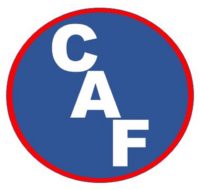Catastrophic failure of a CAF system is almost always at the hands of the operator. Be sure to read the section – “How Not to Destroy a CAF System.”
Due to the variety of systems on the market, it is critical that each department/agency develop their daily/weekly apparatus system check policies/procedures based on manufacturer’s instructions. CompressedAirFoam.com instructions or discussions do not in any way supersede manufacturer’s instructions.
However, there are a few tips offered here based on common CAF system failures that can easily be prevented with regular apparatus checks. Since CompressedAirFoam.com focuses on the foam side of the apparatus, it is not our intent to discuss the specifics of checking the fire pump.
The Foam Proportioning System
The 4 biggest tips for insuring the readiness of the foam concentrate proportioning system in order of previous failure is: #4 – Make sure all valves in the concentrate hose line from the concentrate tank to the pump, and the pump to the water inject location are in the open position. #3 – If the system is electronic, make sure it has a secured ground and powers on. #2 – Make sure there is foam concentrate in the foam tank (it happens occasionally). Don’t rely solely on the electronic foam tank level gage – look insiide the tank. And, #1 – Make sure the operator knows to push the “RED” ON button. #1 is actually the #1 most common failure in the operation of CAF systems. Do not forget to push the “RED” button during operations – Water + Conc +Air+ Agitation = Foam (BUBBLES). (Photos)
One additional item to check – the proportioning system oil level (if equiped). Over time the oil can be consumed, leak or become contaminated.
The Concentrate Proportioning System check items apply any time a system is installed, regardless of whether the unit has CAF or not.
The Compressor System
If the CAF system includes a screw compressor it will incorporate hydraulic oil lubrication and a corresponding water cooling line. The system will have a site glass to check the hydraulic oil level. The oil level line should be visible in the glass – this is the only way to tell if the oil level has dropped (due to usage, or passing out through the air system), or increased due to water infiltration. If the operator cannot see the oil line in the glass, have the system checked by a qualified maintenance person (preferably one EVT certified in Foam Systems). Compressors can only run a few seconds without hydraulic oil before they seize (a permanent problem). Avoid having to stand there while the siezed compressor sits on the Chief’s desk.
Screw compressor systems also incorporate a clean out trap in the hydraulic oil cooling water line. The fire pump circulates water from the pump through the “Heat Exchanger” and then back to the water tank to cool the water. To prevent dirt and debris that passes through fire pumps from reaching the small water lines in the heat exchanger, manufacturers install a cleanout trap (usually a wye type) to catch the dirt and debris. This dirt and debris would clog up the heat exchanger rendering it useless. As the cleanout trap catches the dirt and debris, it can also clog up the trap (but is easily cleaned out). The plugged trap can slow or totally block the cooling water flow causing a system overheating issue. Check the cleanout trap regularly. (Photos)
If the operator is not familiar with the location of the water line cleanout trap, trace the water line from the pump to the heat exchanger, or ask a qualified maintenance person (preferably EVT certified in Foam Systems) or contact the engine builder (OEM).
On the compressor system, the most common failure to function is caused by the failure to operate the system on a regular warm up basis (follow manufacturer’s recommendations for frequency). If air is not run through the system regularly, the minimum pressure valve can seize up, preventing air from entering the hose line. – Run the system regularly.
For more detailed information, see the web site sections on system components and also read “How Not to Destroy a CAF System.”
By the way, there is often a 2nd clean out trap installed just downline from the foam concentrate tank to prevent debris in the tank from reaching the concentrate pump. While this is not a common system failure, this trap also needs to be checked periodically. (photo)
Check List – These items should be added to the departments regular apparatus check sheets:
- Hydraulic Oil Level (midway on the site glass)
- Foam Concentrate Level (look in the tank)
- Foam Proportioner Oil Level
- Y or Panel Mounted Cooling Line Clean Out Trap – clean it out or it flush out depending on the installation.
- Foam system valves – proper position
- Foam System Electric Function/Ground
- Compressor Operational Warm Up Test – Run the System – all modes!
Running the system eliminates the internal moisture and cycles the hydralic oil. Be sure to exercise all the modes available – unload, run, auto, fixed and make sure to flow air.



























